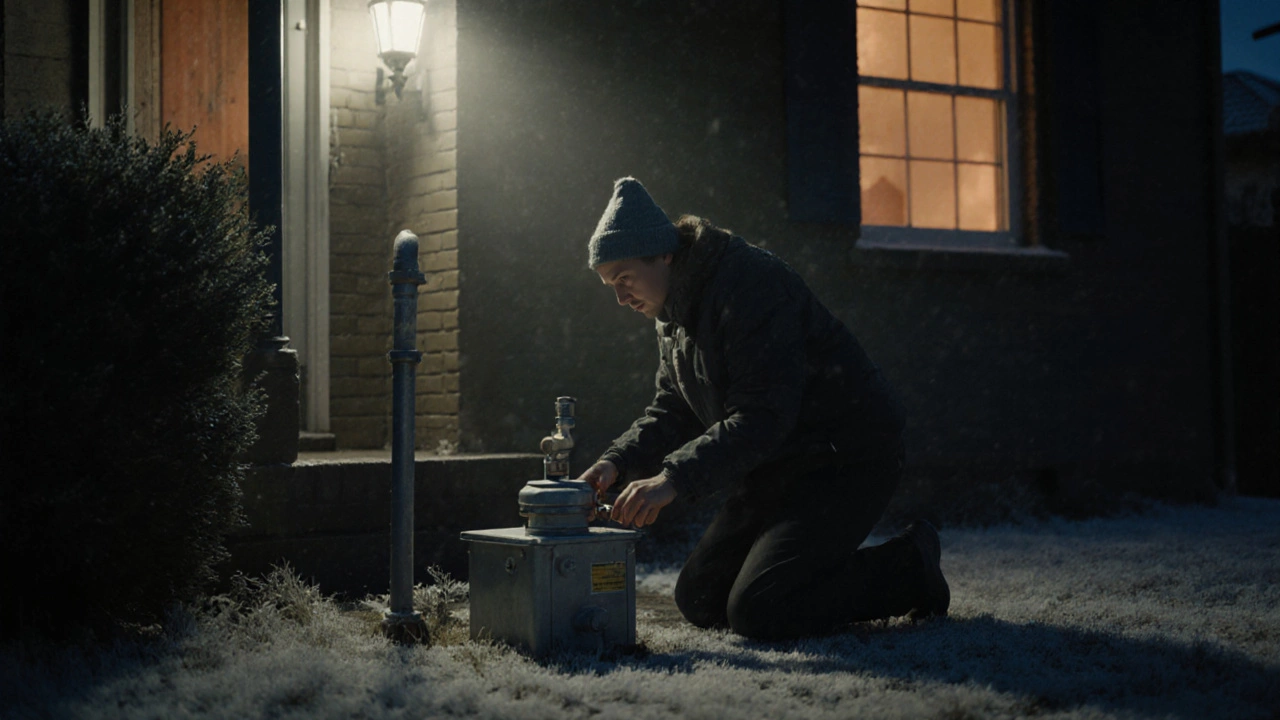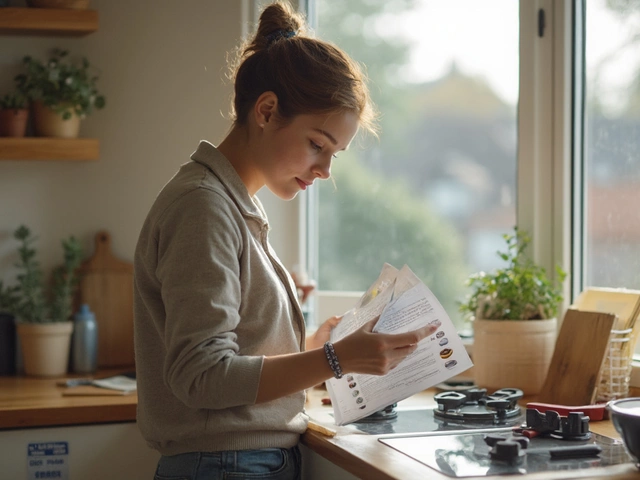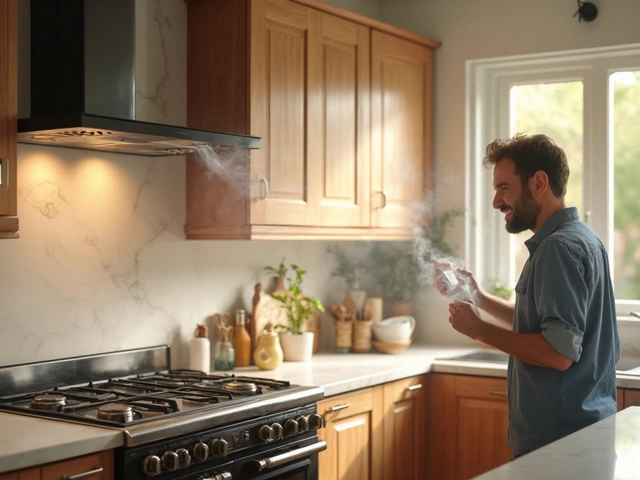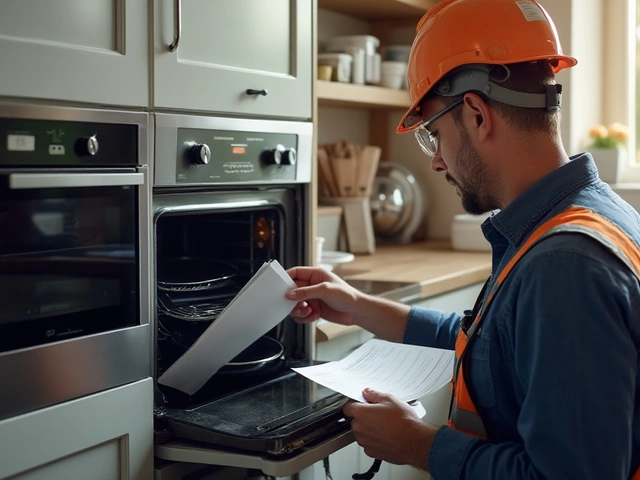If none of your gas appliances are working-your stove won’t light, your heater won’t turn on, and your hot water’s gone cold-it’s not magic. It’s usually one of five simple, common problems. And if you’re in Adelaide right now, where winter nights get chilly fast, this isn’t just inconvenient-it’s urgent.
Check your gas meter first
Before you call a technician, look at your gas meter. It’s usually outside, near the front of your house, in a small metal or plastic box. If the lever inside is turned sideways (perpendicular to the pipe), the gas is shut off. That’s it. That’s the most common reason all your gas appliances stop working at once.Most people don’t realize gas meters have manual shut-off valves. Maybe a plumber turned it off during a repair. Maybe a family member panicked and flipped it after smelling gas. Or maybe the gas company shut it off for non-payment-you’ll get a notice before that happens.
To turn it back on: make sure there’s no smell of gas. Open a window. Then, slowly turn the lever so it lines up with the pipe. You might hear a soft click. Wait 30 seconds. Try turning on your stove. If it lights, you’re done. If not, keep reading.
Is your gas supply actually on?
Your meter might be open, but the supply could still be cut. In South Australia, gas is delivered by companies like SA Gas or AGL. If you’ve recently switched providers or missed a payment, your supply might be suspended. Check your latest bill or log into your account online. Look for a notice like “Supply Disconnected” or “Payment Required.”Some newer smart meters will flash a red light or show an error code if supply is off. If you’re unsure, call your provider. Don’t guess. Gas companies can restore supply remotely in most cases within an hour if there’s no safety issue.
Look for a tripped gas safety valve
Modern homes often have a gas safety valve installed near the main supply line. It’s a small, boxy device, sometimes with a red button. These valves shut off gas if they detect a leak, pressure drop, or unusual flow. They’re not the same as the meter’s shut-off lever.Find it. It’s usually near your water heater, boiler, or where the gas line enters the house. If the button is popped out, press it firmly until you hear a click. You might hear gas flowing again. Wait a minute. Then try lighting your stove. If it still doesn’t work, the valve may be faulty-or there’s a real leak.
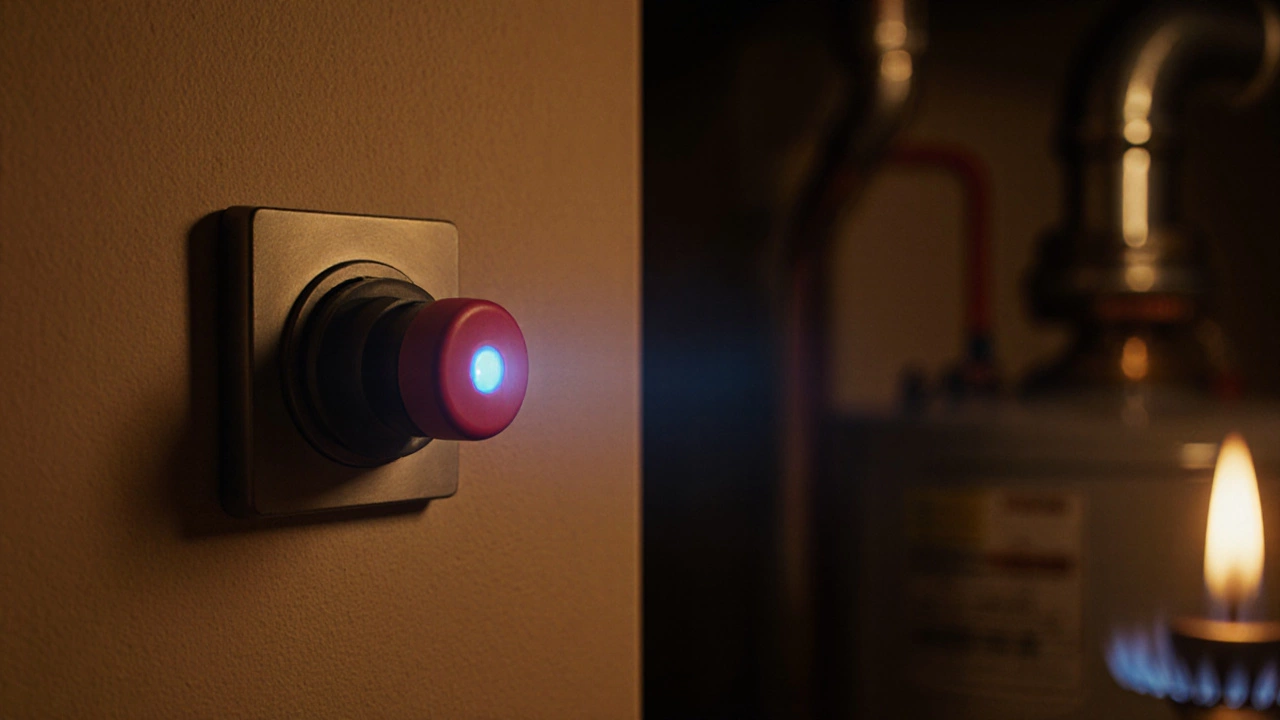
Don’t ignore the smell of gas
If you smell gas-like rotten eggs-don’t flip switches, light matches, or use your phone. Leave the house immediately. Call the gas emergency line on 13 17 26 (in South Australia). Even if the smell fades, get it checked. Gas leaks can be invisible and deadly.Some people think a faint smell means “it’s just the odorant.” That’s true-it’s added to natural gas so you can smell it. But if you smell it after turning the gas back on, it means there’s a leak somewhere. That’s not normal. That’s not a “minor issue.” That’s a 000 emergency.
Check your pilot lights
Older gas heaters, ovens, and water heaters use pilot lights. If the pilot went out, the appliance won’t turn on. This happens often after power outages, strong drafts, or if the thermocouple (a safety sensor) failed.To relight a pilot light: turn the gas control knob to “Off.” Wait 5 minutes for gas to clear. Turn it to “Pilot.” Hold it down. Light the pilot with a long match or lighter. Keep holding the knob for 30 seconds after the flame stays lit. Then release. If it goes out again, the thermocouple is dirty or broken. You can clean it with fine sandpaper-but if you’re unsure, call a professional.
Most modern appliances don’t have pilot lights-they use electronic ignition. But if you have a heater older than 2010, this is still a likely culprit.
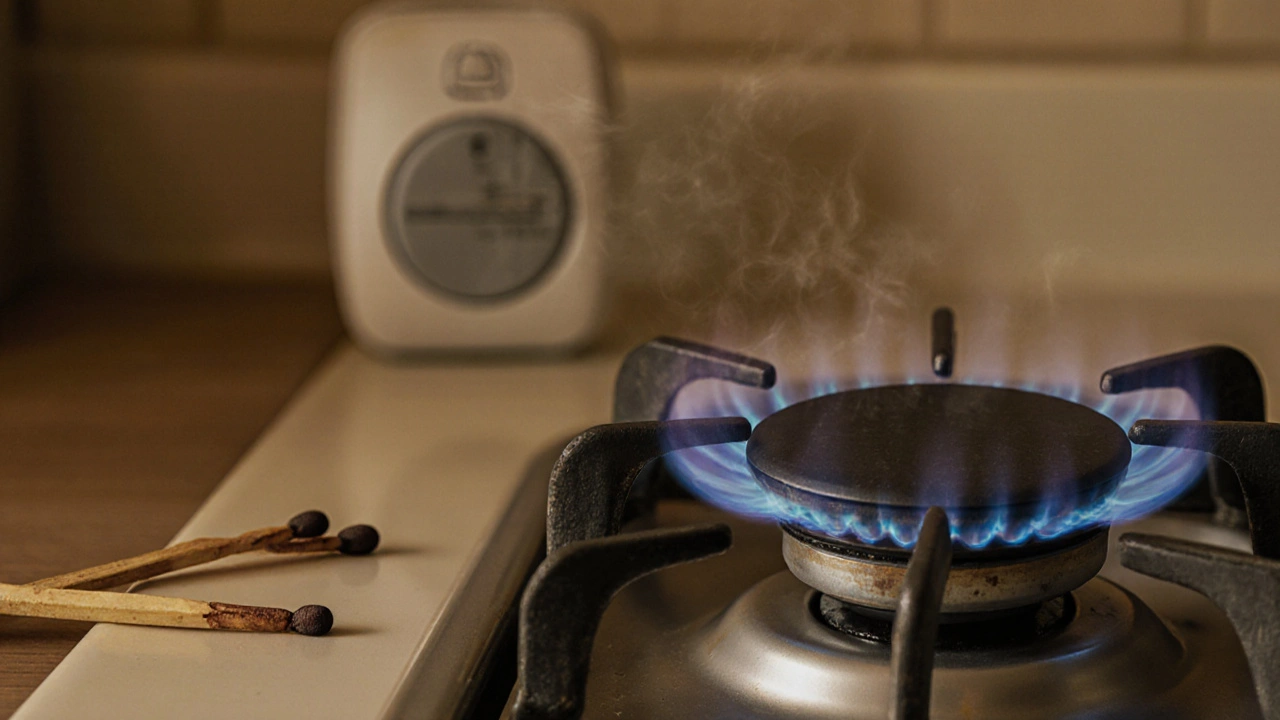
Gas pressure problems are rare-but possible
If all your appliances stopped working at the same time, and the meter’s on, the safety valve is reset, and there’s no smell, then pressure might be low. This is rare. It usually only happens after a major repair, a line break, or if the regulator is faulty.Signs of low pressure: weak flames (yellow instead of blue), appliances that light but don’t heat properly, or appliances that turn off after a few minutes. You can’t fix this yourself. A licensed gas fitter needs to check the pressure with a manometer. In Adelaide, this usually costs $80-$150 for a diagnostic call-out.
What if nothing works?
If you’ve checked the meter, the safety valve, the supply, and the pilot lights-and nothing’s working-then the problem is deeper. Maybe a pipe is blocked. Maybe a regulator failed. Maybe the gas line was accidentally damaged during gardening or construction.At this point, you need a licensed gas fitter. Don’t try to fix pipes yourself. Gas work is regulated in Australia. Only licensed professionals can legally work on gas lines. If you’re in Adelaide, look for a technician with a Class 2 Gas Fitter license. Ask for their license number and verify it on the SA Consumer and Business Services website.
Also, check your home insurance. Many policies cover emergency gas repairs. Some even offer 24/7 hotlines. Call them before you pay anyone.
Prevent this from happening again
Once your appliances are working, take a few minutes to prevent this from happening next winter:- Write down where your gas meter and safety valve are. Show everyone in the house.
- Keep a long lighter or matches near the stove-never rely on electric ignition alone during storms.
- Get your gas appliances serviced every two years. A $150 service can catch a failing thermocouple before it leaves you cold.
- Install a carbon monoxide alarm near your gas heater. It’s not expensive, and it saves lives.
Gas appliances are safe when they’re maintained. But when they fail, they fail fast. Don’t wait until the middle of the night to learn how your system works. Know your meter. Know your valve. Know your options.
Why won’t my gas stove light even though the gas is on?
If the gas is on but the stove won’t light, the issue is likely with the ignition system. Older stoves use pilot lights that can go out. Newer ones use electronic spark igniters that can get clogged with grease or fail from moisture. Clean the burner ports with a toothpick and check if the spark is visible when you turn the knob. If there’s no spark, the igniter or control module may need replacing.
Can a power outage cause gas appliances to stop working?
Yes, but only if they rely on electricity for ignition or control. Gas heaters and ovens with electronic ignition need power to spark the flame. Even though gas flows without electricity, the appliance won’t turn on without that spark. Pilot-light systems aren’t affected by power outages. If your gas heater stopped after a blackout, check if it has electronic ignition and try relighting the pilot if it has one.
Is it safe to reset the gas safety valve myself?
Yes, if you’ve ruled out a gas leak. If you don’t smell gas, it’s safe to press the reset button on the safety valve. But if you smell gas at any point-even faintly-leave the house and call 13 17 26. Resetting the valve without checking for leaks could be dangerous. Always ventilate the area first, and wait a few minutes after resetting before testing appliances.
How do I know if my gas supply has been disconnected?
Check your online account with your gas provider. Most will show your supply status. You can also look at your meter-if it’s a smart meter, a red light or “OFF” message means supply is cut. If you’ve missed a payment or recently switched providers, your supply may have been suspended. Call your provider directly if you’re unsure. They can confirm and restore service quickly if there’s no safety issue.
Should I replace my gas appliances if they’re over 15 years old?
Not necessarily, but you should get them inspected. Older gas appliances can still work safely if maintained. However, parts like thermocouples, burners, and valves wear out. A $100 service can extend their life by years. If your appliance is inefficient (yellow flames, slow heating), noisy, or frequently breaks down, replacement may be more cost-effective than repairs. Look for ENERGY STAR-rated models if you’re upgrading.
If your gas appliances suddenly stopped working, the fix is often simple. But the stakes are high. Don’t ignore the signs. Know your meter. Know your valve. Know when to call a pro. Your safety-and your warmth-depends on it.

